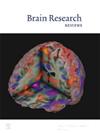Electromagnetic fields and the blood–brain barrier
Abstract
The mammalian blood–brain barrier (BBB) consists of endothelial cells, linked by tight junctions, and the adjoining pericytes and extracellular matrix. It helps maintain a highly stable extracellular environment necessary for accurate synaptic transmission and protects nervous tissue from injury. An increase in its normally low permeability for hydrophilic and charged molecules could potentially be detrimental. Methods to assess the permeability of the BBB include histological staining for marker molecules in brain sections and measurement of the concentration of marker molecules in blood and brain tissue. Their advantages and disadvantages are discussed. Exposure to levels of radiofrequency electromagnetic fields (EMF) that increase brain temperature by more than 1 °C can reversibly increase the permeability of the BBB for macromolecules. The balance of experimental evidence does not support an effect of ‘non-thermal’ radiofrequency fields with microwave and mobile phone frequencies on BBB permeability. Evidence for an effect of the EMF generated by magnetic resonance imaging on permeability is conflicting and conclusions are hampered by potential confounders and simultaneous exposure to different types and frequencies of EMF. The literature on effects of low frequency EMF, which do not cause tissue heating, is sparse and does not yet permit any conclusions on permeability changes. Studies on the potential effect of EMF exposure on permeability of the BBB in humans are virtually absent. Future permeability studies should focus on low frequency effects and effects in humans. Care should be taken to avoid the methodological limitations of earlier studies and to determine the pathophysiological relevance of any changes found.

 求助内容:
求助内容: 应助结果提醒方式:
应助结果提醒方式:


